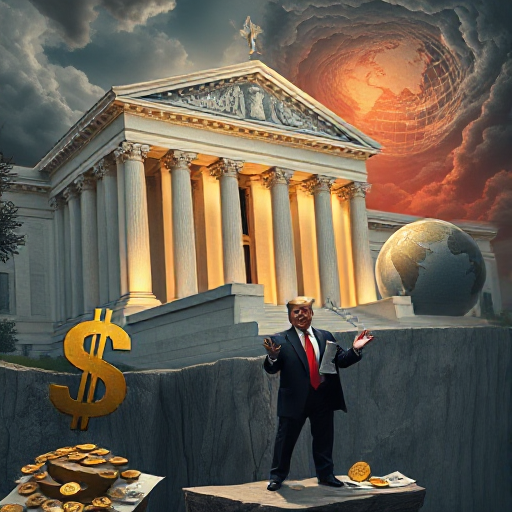The air is feeling heavier for the finance industry, yet it remains uncertain where to look to avoid the wrong side of the downside.
This brief recap aims to summarize the well known disruptive factors that, togheter spark a chain reaction of reinforcing, unsettling consequences.
Table of Contents
- Long awaited Basilea III is here.
- Scarcity is the new normal.
- Federal Reserve vs Trump.

Long awaited Basilea III is here.
Basilea III is a global regulatory framework introduced after the 2008 financial crisis to enhance the stability of the banking system. Compared to its predecessor, Basilea II, it imposes stricter capital requirements, higher quality capital, and introduces new liquidity and leverage ratios. Key measures include a higher minimum capital ratio (up to 10.5% with buffers), a leverage ratio of 3%, and liquidity requirements like the Liquidity Coverage Ratio (LCR) and Net Stable Funding Ratio (NSFR).
While Basilea III strengthens banks’ resilience, ensuring they can withstand economic shocks, it also means that every bank in the world must hold more capital and liquid assets. This reduces the amount of money available for lending, potentially leading to lower liquidity in the economy. As a result, businesses, particularly those in the private sector, might face higher borrowing costs and reduced access to credit, which can slow down economic growth in the short term.
Scarcity is the new normal
Due to the mounting debt of vulnerable countries exposed to external shocks, the ongoing presence of conventional wars, the decline in the economically active population, and policies aimed at reducing carbon emissions, there is a growing restriction in global production. This, in turn, creates scarcity as the new normal. Initially, this scarcity may be barely noticeable, but its effects compound over time, becoming more pronounced.
This is evident, for example, in the rising prices of food, which may seem to stem from nothing more than a few bad crops here and there. However, in reality, it is a symptom of a much deeper and more complex interplay of the factors previously mentioned.
Federal Reserve vs Donald Trump
Or should we say “how long does it takes to make a president understand his temporary role on a great permanent building we call it “Financial System”.
Yes, he has his strengths: large approval rate, congress support, a rising consensus that govt spending must be slashed away and he seems to be pointing in that direction until you see the US: three active wars and an economy that, while outwardly resilient, is in truth a colossus balanced precariously on a mountain of debt. This debt has fueled not only America’s ambitious domestic ventures but also its extensive global engagements. However, it remains critically exposed to the whims of the Federal Reserve, the ultimate arbiter of monetary policy and, by extension, the cost of servicing that debt.
The Fed, an institution as permanent as the financial system it safeguards, operates with a degree of independence that few elected officials can challenge. This creates a delicate, almost theatrical power dynamic: a president armed with political capital—approval ratings, congressional support, and populist momentum—meets an institution whose tools, not its words, dictate economic outcomes. And in this particular drama, the stakes couldn’t be higher.
If the Fed refuses to aggressively lower rates, Trump’s administration will face mounting difficulties. Servicing the national debt, paying federal salaries, and financing three simultaneous wars would strain the U.S. Treasury even under favorable conditions. Add to that his ambitious domestic agenda, which requires a financial war chest akin to funding a fourth conflict, and the picture grows bleak.
But the Fed’s challenge doesn’t end with Trump. Lowering rates significantly would risk further depreciating the dollar, weakening its purchasing power and eroding its global dominance. This plays directly into the hands of the BRICS coalition—a bloc that is not just competing for global influence but actively building alternatives to the U.S.-led financial architecture. With deeper economic ties and the increasing use of gold-backed transactions to bypass the dollar, BRICS poses a direct challenge to the supremacy of the Western financial system.
Thus, the Fed finds itself trapped in a paradox: assist Trump by easing monetary policy, which might temporarily bolster the administration but at the cost of long-term damage to the dollar’s hegemony, or hold the line, risking a sovereign default as the U.S. budget deficit—chronic and unyielding—comes under unbearable strain. Either path risks undermining the financial foundations that uphold America’s global influence.
And this, perhaps, is the ultimate irony: the most powerful man in the world is powerless to dictate terms to an institution whose mandate, though confined to monetary stability, often holds the fate of presidencies in its hands.
